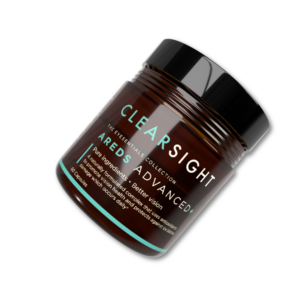What is Macular Degeneration?
Macular Degeneration is an eye condition primarily affecting the central part of the retina known as the macula, which is critical for clear and detailed vision. It manifests primarily in individuals over the age of 50 and is a leading cause of severe vision loss in older adults. The disease is categorized into two types: dry (atrophic) and wet (exudative).
Dry Age-Related Macular Degeneration (dry AMD):
Wet Age-Related Macular Degeneration (wet AMD):
Dry Macular Degeneration, often referred to as dry AMD, is the most prevalent type of age-related macular degeneration, accounting for approximately 85-90% of all cases. While it typically results in less severe vision loss compared to its wet counterpart, it is marked by the development of large, soft drusen yellow deposits that form beneath the retina. Although these deposits don’t initially affect vision, over time, as they grow and accumulate, they can lead to a deterioration in the central field of vision.
Currently, there is no definitive cure for dry AMD, which can be disheartening for those afflicted. However, hope lies in the number of clinical trials conducting research into potential treatments. Among these potential breakthroughs are stem cell therapies and various drug injections designed to target the retina’s health. While we await the outcomes of such research, it’s critical to monitor the condition through regular visits to retina specialists to prevent the possible progression into the more severe wet form and the resultant central vision loss.
The onset of macular degeneration is influenced by several causes and risk factors, which span both genetic predispositions and lifestyle choices. Individuals over the age of 50 are at heightened risk, and other factors such as a familial history of the condition, smoking habits, excessive alcohol consumption, having lighter skin, and blue eyes, can amplify the possibility of developing this eye condition.
One significant indicator of macular degeneration is the presence of drusen, the age-related deposits found in the retina. As the retinal pigment epithelium slows in its nutrient transport activity, these yellowish deposits can form, flagging the first signs of potential degeneration. Lifestyle factors such as obesity, high cholesterol, and high blood pressure, alongside prolonged exposure to the sun, are shared risk factors for both dry and wet AMD.
Those with dry AMD might notice an array of symptoms, including blurred or dark spots in their central vision, perception of faded colors, heightened sensitivity to light, and difficulty with adjusting to changes in light. Initially, these symptoms can be subtle and progress slowly, often going undetected until they become more pronounced.
As dry AMD advances to more severe stages, central vision loss can become a prominent consequence, profoundly impacting everyday activities such as reading, driving, and recognizing faces. This central vision loss can sometimes result in depression and social isolation due to the reduced quality of life. Furthermore, without proper management and monitoring, dry macular degeneration has the potential to transition into the wet form, making vigilant attention to changes in vision crucial for maintaining eye health.
The journey to finding an effective treatment for dry macular degeneration includes numerous clinical trials investigating the potential of therapies such as stem cell treatments, Apl-2 injections, Oracea oral antibiotics, and Metformin anti-inflammatory medications. These represent hope on the horizon for those living with the condition.
Identifying AMD in its initial stages can significantly reduce the odds of severe vision loss, thereby highlighting the role of prevention and timely management. Dietary supplements containing vitamins C, A, E, along with zinc and copper have been shown in studies, such as AREDS2, to slow the progression in cases of dry AMD.
In addition to these measures, adopting a healthy lifestyle is essential. Quitting smoking, balancing weight, engaging in regular physical activity, and managing blood pressure and cholesterol levels can diminish the risk of developing macular degeneration. Moreover, routine eye exams and advanced diagnostic tools like optical coherence tomography (OCT) are indispensable for keeping track of eye health, detecting the early, stages of macular degeneration, and enabling early intervention.
Wet Macular Degeneration, also known as wet AMD, represents a more severe form of age-related macular degeneration. It is characterized by the growth of abnormal blood vessels underneath the retina, which can break, bleed, and leak fluid. This leakage disrupts the normal structure and function of the macula, leading to the potential for scar tissue formation and subsequent severe central vision loss. Unlike its dry counterpart, which develops gradually, the wet form can lead to a rapid decline in vision and is considered by retina specialists to be the more serious of the two types. Wet AMD requires prompt and aggressive treatment to preserve vision as much as possible.
The risk factors for wet macular degeneration largely overlap with those of the dry form. The condition is most common in individuals over the age of 50, but genetic factors, such as a family history of AMD, can increase the risk. Lifestyle choices play a significant role too. Smoking, high blood pressure, high cholesterol, obesity, excessive alcohol intake, and long-term sun exposure are all contributing factors to the overall risk of developing wet AMD.
Prolonged exposure to sunlight, a diet high in saturated fats, and elevated serum lipids are additional risk variables that could influence the onset and progression of this eye disorder. People with lighter skin and blue eyes, along with those who have a predisposition due to certain genetic factors like abnormalities in complement factor H, are also at higher risk of developing wet AMD. It’s important to note that the presence of drusen alone is not a definitive marker for wet AMD, but their size and abundance can be indictive of the disease severity and risk of conversion from the dry to wet form.
The progression from the early stages of age-related macular degeneration to the wet type can involve an abrupt change in symptoms. Individuals may suddenly notice distorted vision, with straight lines appearing wavy or bent, and dark spots or blank spots in their central field of vision. There may also be a rapid and noticeable reduction in central vision quality, sometimes occurring in a matter of days or weeks.
The hallmark symptom of wet AMD is severe central vision loss, which can greatly impact one’s ability to perform daily tasks such as reading, driving, and recognizing faces. Given that wet macular degeneration can lead to irreversible damage, it is critical to seek prompt evaluation and treatment from retina specialists if any sudden vision changes occur.
Treatment options for wet macular degeneration are more intensive than for dry AMD. They often include anti-VEGF (vascular endothelial growth factor) injections that help to reduce the growth of the abnormal blood vessels and leakage into the retina. Laser therapy and photodynamic therapy are other options that may be considered to seal off leaking vessels.
Preventative measures for wet AMD are similar to those for dry AMD and focus on reducing risk factors associated with the development of the disease. This includes living a healthy lifestyle, quitting smoking, managing blood pressure and cholesterol levels, and incorporating a diet rich in omega-3 fatty acids, leafy green vegetables, and low in saturated fats.
Routine eye exams are vital for early detection. Tests such as OCT and dilated eye exams allow early diagnosis and management of the disease, which can help prevent progression to severe vision loss. As with dry AMD, family history should prompt more regular monitoring for signs of macular degeneration.
As research continues to advance, patients should remain optimistic about the future of treatment options. Coupled with lifestyle management and vigilant eye care, the negative outcomes associated with wet macular degeneration can be mitigated, thereby preserving the quality of life and independence for as long as possible.

Maintaining a diet that promotes eye health is a pivotal step in combating the progression of dry age-related macular degeneration (AMD). Research highlights that certain nutritional supplements and food choices can be particularly beneficial. For those in the intermediate stage of dry AMD, supplements packed with vitamins and nutrients alongside eye-friendly foods such as yellow fruits, leafy greens, and fish may slow deterioration.
Here’s a quick list of AMD-friendly nutrients and their food sources:
Opting for lifestyle changes, including adjusting your diet and considering vitamin supplements, can make a significant difference. A proactive approach to eye health through routine eye exams and consultation with retina specialists can also keep you informed about your individual needs for preventing severe vision loss.
Age-related macular degeneration (AMD) represents a significant risk factor for severe vision loss, particularly for those aged 65 and above. The disease manifests in two primary forms: the more common dry form and the more severe wet form. Dry AMD, accounting for most cases, causes a gradual impairment of central vision due to the thinning of macular cells, whereas wet AMD, although less common, can lead to rapid and more serious central vision loss due to abnormal blood vessel growth. Management of these conditions may be influenced by genetic predisposition or risk factors such as high blood pressure and family history. Routine eye exams, including dilated eye exams by retina specialists, are crucial for early detection and to explore treatment options. Understanding the differences between dry and wet AMD is imperative for patients and clinicians to tailor the correct management and potentially slow the progression of vision loss. Regular monitoring of eye health is vital to addressing blank or blind spots in the field of vision and maintaining quality of life despite the diagnosis of either dry or wet AMD.

Discover the transformative effects of Clearsight AREDS Vision Supplement. Crafted with vital nutrients, it offers protection and improvement for your eyesight, targeting age-related vision problems. Experience enhanced eye health and clearer vision with regular use.
Subscribe to our newsletter for wellness tips, special offers and an instant $10 discount on your first purchase!
Sign Up now and receive 15% off your first order